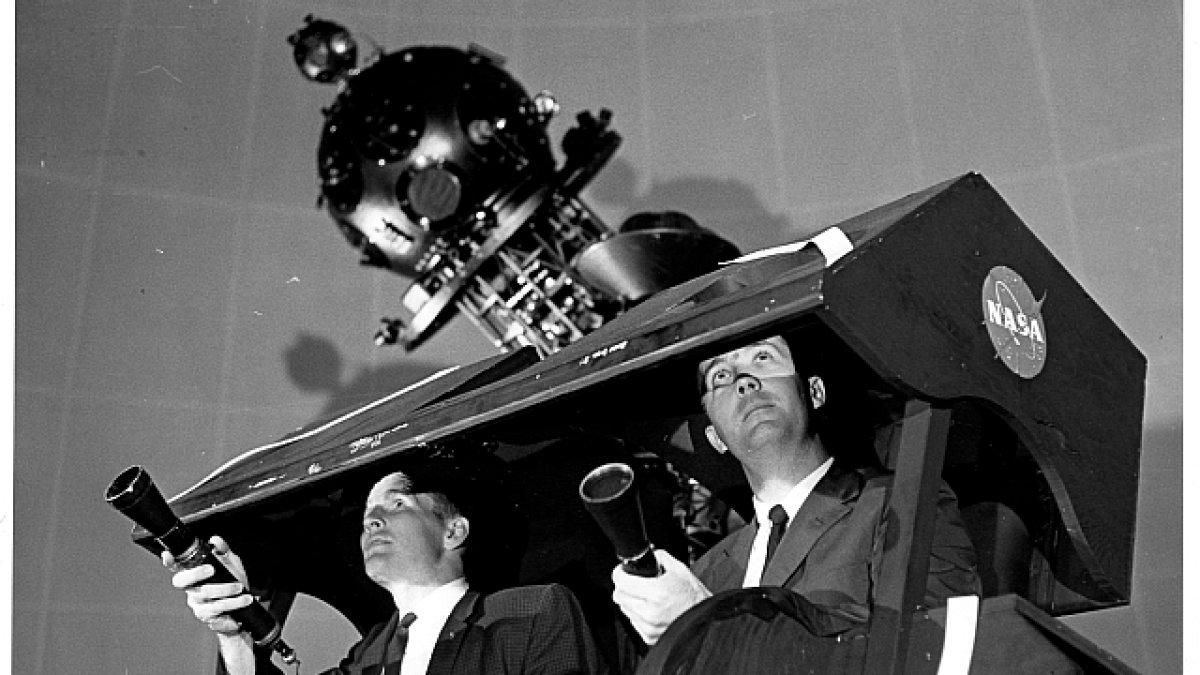Early space journeys began at Morehead Planetarium
Astronauts of NASA's Mercury, Gemini, Apollo and Skylab programs received their navigation training at Carolina's Morehead Planetarium.

Before Neil Armstrong made his small step onto lunar soil, his journey to space began the same way as the rest of America’s first astronauts: walking the halls of Morehead Planetarium.
For more than a decade, the University of North Carolina at Chapel Hill’s planetarium served as the hub for celestial navigation training for 62 members of the Mercury, Gemini, Apollo and Skylab programs as NASA turned to Morehead to teach astronauts to navigate through the stars for when technology failed.
“Our astronauts needed a rock-solid mental picture of the star field and had to know the procedures for celestial navigation because they served as part of the navigation system of our early spacecraft,” said William Barry, NASA’s chief historian. “This was an essential part of the training of our astronaut corps and proved important to their survival on a number of occasions.”
First opened in 1949, Morehead was the first planetarium in the south and only the sixth in the country. The planetarium served as a means of science education for a wider audience of the community. Then in the late 1950s, former planetarium director Tony Jenzano pitched a training concept to NASA: use Morehead to train astronauts on ancient sea mariners’ tactics of navigating across the ocean using guide stars.
The goal was to fill in the gaps of the imperfect automated navigation systems of early spacecrafts.
“The thought was that the spacecraft’s systems might not necessarily be working properly,” said Richard McColman, full-dome theater manager at Morehead Planetarium. “It also turned out that the automatic system needed to be updated periodically because over a period of hours a little bit of drift would creep into the automatic system and it would start to be progressively inaccurate.”
Beginning in 1960, astronauts often stopped by Morehead for short periods of training while traveling between other NASA facilities, McColman said.
In an attempt to protect the astronauts’ privacy, planetarium staff referred to the training program in code — whenever a crew was scheduled to arrive for celestial training under the 69-foot dome, it was “cookie time.”
“Astronaut training was the last thing you could think of when you heard ‘cookie time’,” McColman said.
Planetarium educators designed a general navigation training program to teach astronauts 42 guide stars that could key them into different areas of the sky. Crews also underwent mission specific training, which was also developed by the educators.
“The astronauts had to really learn from the stars and constellations — even a lot better than most astronomers,” said McColman. “Unlike astronomers who can go out and look up and see a panoramic view of the sky, astronauts were limited to nothing more than about a 60 degree patch of the sky through the window of the spacecraft.”
Planetarium staff aimed to create the most realistic view of the sky for the astronauts, and turned to creative solutions to mimic the crafts each crew would be working in.
Members of the Mercury crew, for example, viewed the dome with their heads inside a small canopy situated on an old fighter pilot trainer to simulate the spacecraft’s window and movements.
Later, for the Gemini missions, Morehead staff created the “Gemini Trainer” out of a specially designed plywood box attached to a swiveling barber chair base to simulate sitting in the two-man spacecraft.
“Between the two axis of motion that the planetarium projector would create, and then the modified barber chair that the Morehead technicians would turn to simulate the yaw motion of a spacecraft, they could simulate what the effect would be if the astronauts were sitting in the spacecraft and maneuvering, and how the stars would change,” McColman said.
For several astronauts, the training at Morehead became key to survival.
During the one-manned Mercury-Atlas 9 mission in 1963, Gordon Cooper lost all navigation systems while in orbit.
“He had to use the stars to be able to orient the spacecraft properly to be able to come in through the 3,000 degree fiery re-entry into the earth’s atmosphere,” McColman said. “It was thought by a lot of the engineers that there was no way the astronaut could manually pilot a spacecraft through that last leg and be able to land successfully and even survive. But by simply citing the key guide stars, he was able to do it.
“It turns out, he made the most accurate landing in terms relative position with the recovery fleet of all of the Mercury missions.”
In 1969, lightning struck Apollo 12 shortly after liftoff, temporarily disabling the spacecraft’s navigation system. Once carried into Earth orbit by the rocket — whose separate navigation system was unaffected by the lightning strike — the crew used their Morehead star training to realign their spacecraft’s system, and then went on to successfully complete their lunar landing mission.
“Except for a handful of locals, most people who come to Morehead don’t even realize this history exists,” McColman said.
But in March, the planetarium’s place in space exploration history was memorialized with an NC Highway Historical Marker. Jenzano’s grandson and the trainer Richard Knapp returned to Morehead to unveil the marker, which can be seen from Franklin Street.
“The astronaut training program is really a fascinating part of Morehead’s legacy to North Carolina,” planetarium director Todd Boyette said at the ceremony. “When you walk into our planetarium, you’re walking in the footsteps of men who walked on the moon.”




